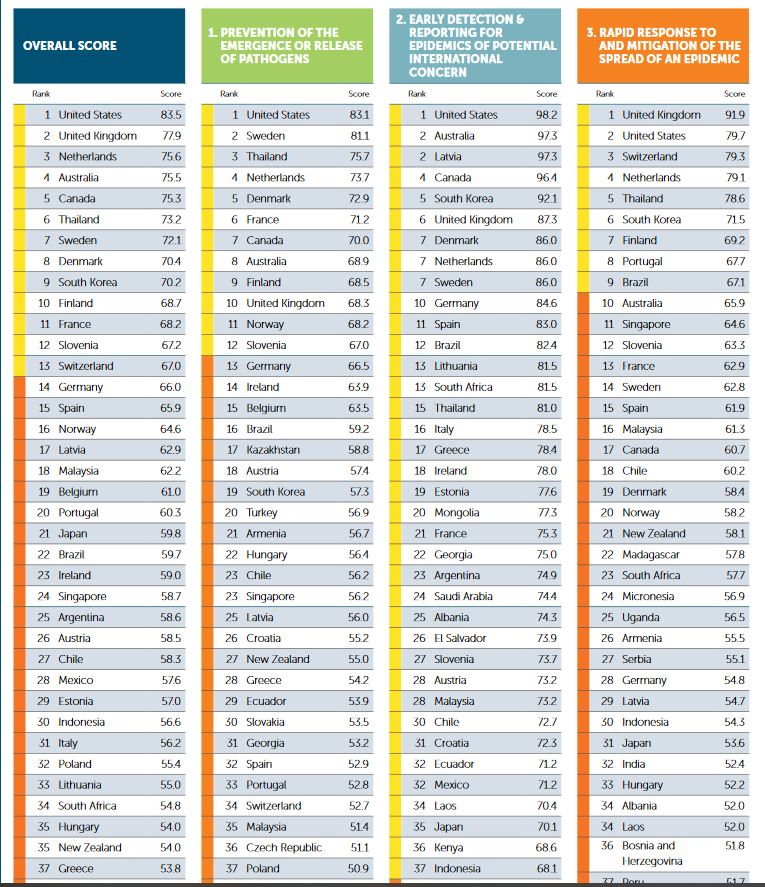Globas Health Security Index - Building Collective Action and Accountability October 2019
As co-leaders of the Global Health Security (GHS) Index, we are indebted to an experienced, knowl-edgeable, and deeply committed team that helped develop this groundbreaking index.
Biological threats—natural, intentional, or accidental—in any country can pose risks to global health, international security, and the worldwide economy. Because infectious diseases know no borders, all countries must prioritize and exercise the capabilities required to prevent, detect, and rapidly respond to public health emergencies. Every country also must be transparent about its capabilities to assure neighbors it can stop an outbreak from becoming an international catastrophe. In turn, global leaders and international organizations bear a collective responsibility for develop-ing and maintaining robust global capability to counter infectious disease threats. This capability includes ensur-ing that financing is available to fill gaps in epidemic and pandemic preparedness. These steps will save lives and achieve a safer and more secure world.
he Global Health Security (GHS) Index is the first compre-hensive assessment and benchmarking of health security and related capabilities across the 195 countries that make up the States Parties1 to the International Health Regu-lations (IHR [2005]).2 The GHS Index is a project of the Nuclear Threat Initiative (NTI) and the Johns Hopkins Center for Health Security (JHU) and was developed with The Economist Intelligence Unit (EIU). These organizations believe that, over time, the GHS Index will spur measur-able changes in national health security and improve international capability to address one of the world’s most omnipresent risks: infectious disease outbreaks that can lead to international epidemics and pandemics. The GHS Index is intended to be a key resource in the face of increasing risks of high-consequence3 and globally catastrophic4 biological events and in light of major gaps in international financing for preparedness. These risks are magnified by a rapidly changing and interconnected world; increasing political instability; urbanization; climate change; and rapid technology advances that make it easier, cheaper, and faster to create and engineer pathogens.


